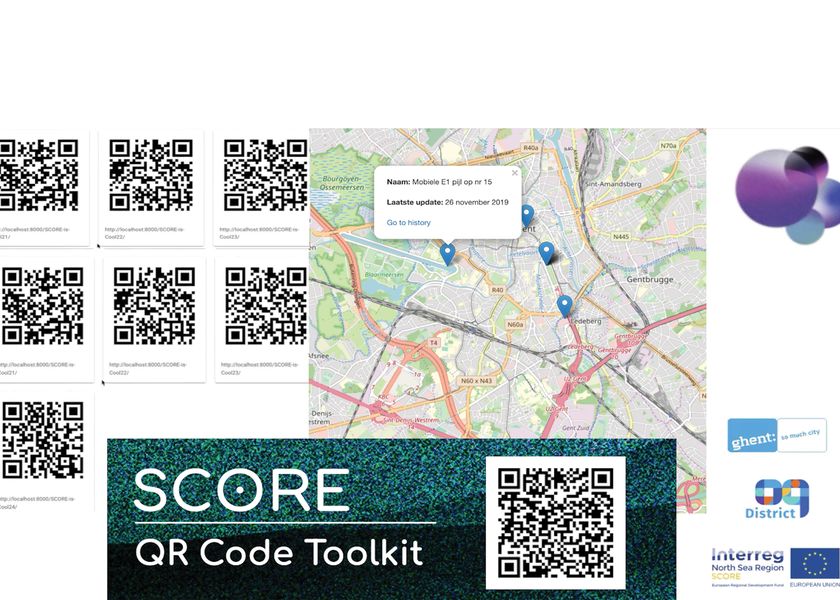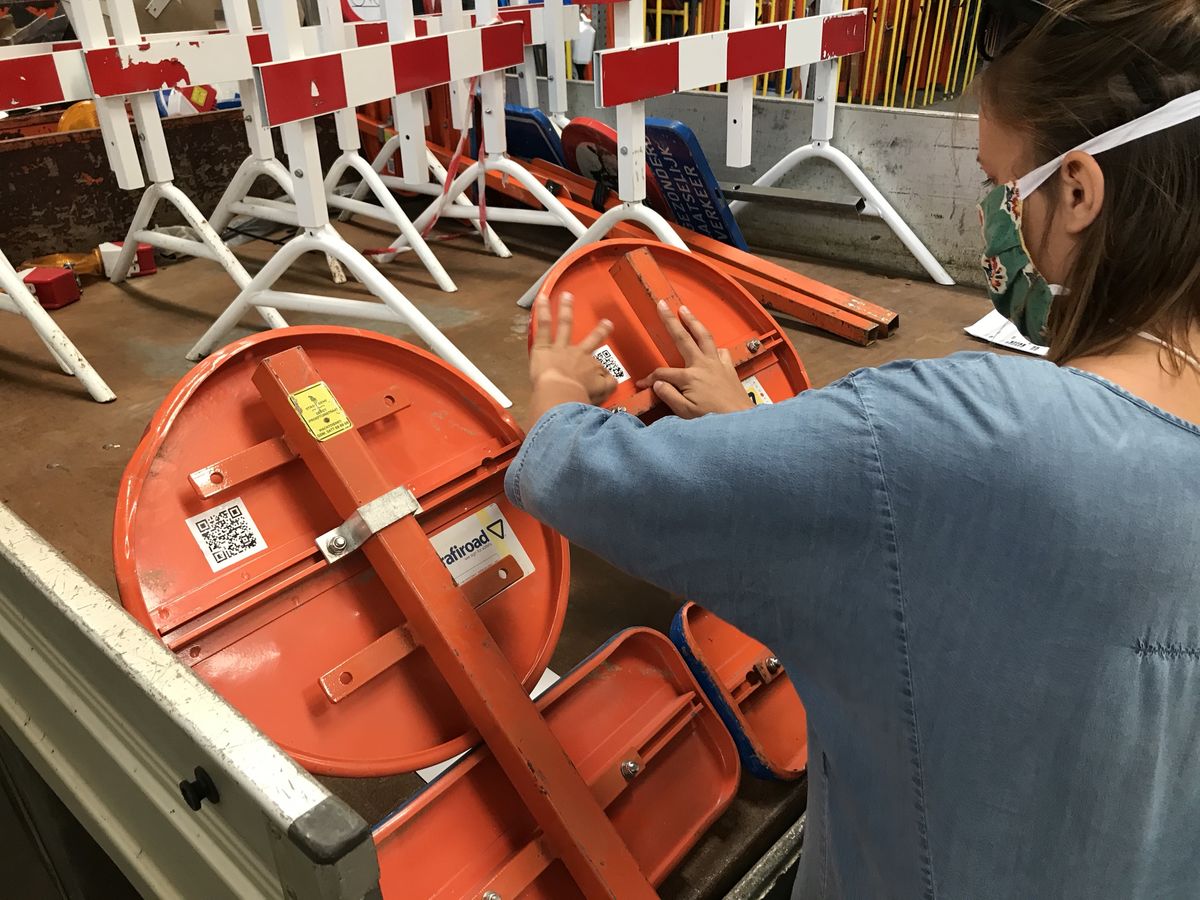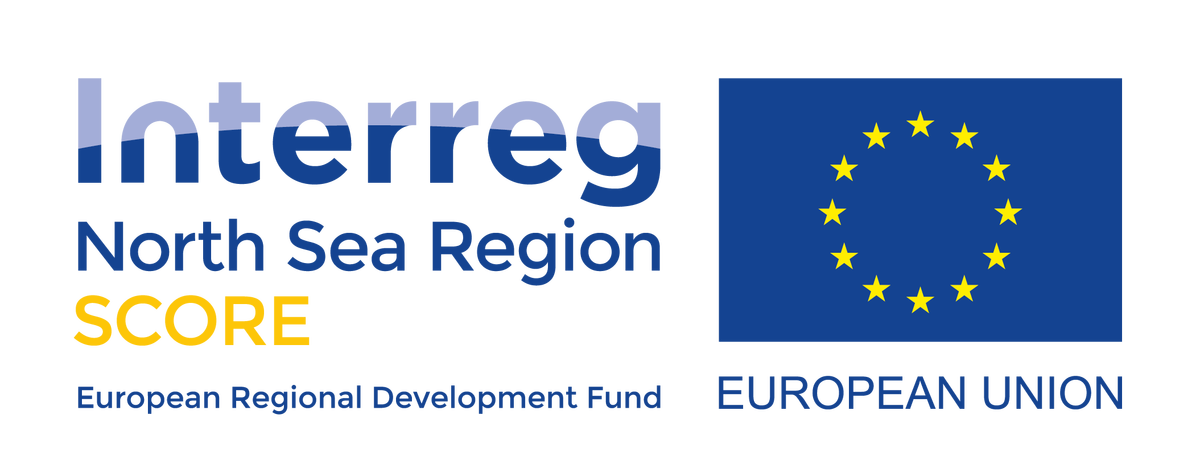QR Code Toolkit • SCORE

As it becomes easier and more common for people to scan a QR Code on their mobile device, QR Codes are also tied to public services in smart cities.
The QR Code Toolkit is a solution that allows cities to use dynamic QR Codes. It allows a city to:
- Make city objects smart, as an alternative to IoT sensors. By making use of the camera and sensors in commodity mobile devices.
- Trace, track, collect data and report about a city's inventory of assets and materials.
- Let citizens report issues more effortlessly (with less clicks or taps).
- Link city objects to digital data and communication, and also trigger digital actions from these physical objects and hotspots.
- Use city assets (eg. street furniture) as a so called 'touch point' with citizens, across city departments.
- Facilitate 'touchless' Covid19 applications.
The toolkit is a set of open source software building blocks. After you set up this toolkit once in your city with your IT department or IT partner, you can start enhancing processes with QR Codes. The solution has cost and time saving features:
- Helps cities to become more digital and data driven.
- Replaces the paperwork: less work with better data quality.
- Smoother citizen interaction in public services.
- Advantages to classic online QR Code tools.
- The behaviour of a QR Code can be completely reconfigured at any moment while their visual appearance remains the same.
- Is a building block, fits well into other projects/tools.
- First attach the QR codes, then start the software development or integration. This solution allows agile development with QR codes.

Part of the Interreg EU project SCORE (Smart Cities + data REuse), SCORE partners District09 and City of Ghent developed the solution as an open source reusable toolkit. The SCORE partner cities test it and part of SCORE's objectives any city is encouraged to replicate it.
In Ghent, the toolkit has been made available in the city wide IT infrastructure. This has resulted in a growing list of different integrations of QR Codes to enhance processes, such as:
- Assets, persons, materials and fleet in the Roads&Bridges department. QR Codes as a real-time alternative to admin task logging. Better data on materials used for road maintenance.
- Road signs (eg. parking signs) in the Roads&Bridges department. QR Codes to check in signs as they are placed in the city and as they are collected for return. Keep better track of asset circulation, improve insights on loss, purchases and logistics.
- Points of interest of the Tourism department. QR Codes to capture tourist mood.
- Entrance of city buildings: QR Codes for seat reservation of office spaces (Covid-19) and QR Codes to leave contact information for contact tracing (also Covid-19).
- In situ, low barrier citizen nuisance reporting from strategic locations (eg. street furniture). A proof-of-concept with the Organisational Development department.
How does it work:
- Toolkit is set up for the city (once). A central domain name is chosen from where all QR Codes are handled dynamically (eg. qr.stad.gent)
- City can now generate unlimited QR Codes.
- City starts to test its first idea for a QR Code use case. A small batch of unassigned QR Codes is generated, attached to objects (eg. as stickers, or printed within a design) and these are registered in the system for this specific purpose.
- The behaviour of the QR Codes (eg. different links to multiple destinations for each unique QR Code) can now be configured for the registered QR Codes. Testing and adaptation is possible.
- City staff uses the frontend interface to set up simple web page destinations. Multiple web pages can be configured as destinations, or the QR Code can lead to a single webpage.
- In more advanced use cases, the IT team integrates/links the QR Codes with existing software and/or data. Or new software is developed. (data acquisition, data processing, forms, etc.)
- Successfully tested use cases can scale: larger batches of unique QR Codes are registered and added, adding ever more tagged objects to the system. Permanent QR Codes are printed or even engraved in robust materials.
- Any QR Code that is "live" can be reconfigured at any given moment during its lifetime. Flexibility is built in and the city adapts the workflow for the QR Code to unforeseen circumstances, or to support temporary changes and opportunities. Even years after the QR Code was first used, the QR Code itself never needs replacement.

Your cookie preferences
We use cookies and similar methods to recognize visitors and remember their preferences. To learn more about these methods, including how to disable them, view our cookie policy.

